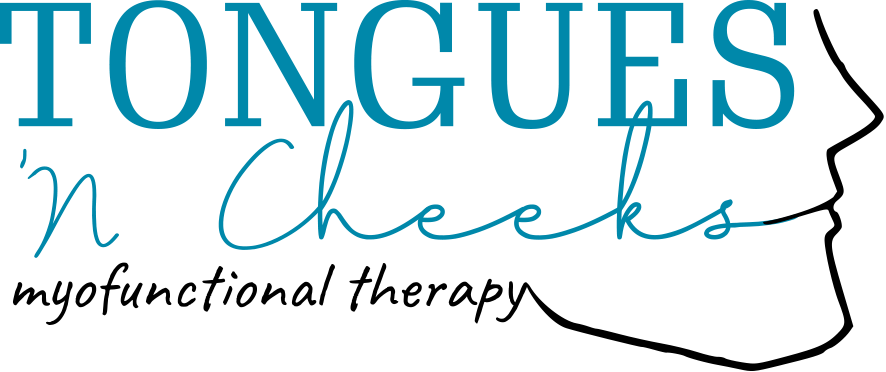FAQs
General Questions
Orofacial Myofunctional Therapy consists of neurological re-education exercises that assist the normalization of craniofacial structures and function.It is related to the study, research, prevention, evaluation, diagnosis and treatment of functional and structural alterations in the region of the mouth (oro), face (facial) and regions of the neck (oropharyngeal area).
The main problems related to OMDs are alterations in breathing, sucking, chewing, swallowing and speech, as well the position of the lips, tongue (including what is known as oral rest posture), and cheeks.
Related to Lingual Frenulum or Tongue-tie
Tongue-tie is a popular term used to characterize a common condition that often goes undetected. It occurs during pregnancy when a small portion of tissue that should disappear during the infant’s development remains at the bottom of the tongue, restricting its movement. When an infant is born with tongue-tie, it is important to research other family members, since this change has a genetic influence.
A specialist in Orofacial Myofunctional Therapy is well suited to detect a tongue-tie since they are educated about the lingual frenulum and also the normal way a newborn sucks. In the case of infants, a pediatrician and a lactation consultant may also be involved. In the case of adults, an Orofacial Myofuntional Therapist, dentist, or dental hygienist can all identify tongue-ties.
Yes, but there are varying degrees of tongue-tie, so the importance of having a test or validated protocol that evaluates the tongue and the “trickle” under the tongue (lingual frenulum)and the way the infant sucks is crucial. This will ensure an accurate diagnosis, and indicate whether or not the need to do a frenotomy (or small “cut” under the tongue) is recommended.
In infants, surgery is usually indicated when the lingual frenulum restricts the tongue’s movement and compromises breastfeeding. A lactation consultant and pediatrician may also be indicated for consultation. In older children and adults, the indication is made when the tongue is visibly restricted, unable to adequately reach the palate, or when distortions in speech and swallowing are present.
Many people with tongue-tie suffer the consequences without knowing the cause. There are infants who have changes in their feeding cycle, which causes stress for the infant and mother. Untreated tongue-ties can also cause difficulty chewing, and speech and sleep problems.These issues can affect communication, social relationships and professional development.
Related to Mouth Breathing
Mouth breathing refers to breathing predominantly through the mouth instead of the nose.
Yes. Ramifications include changes to orofacial structures and functions which affect sleep(snoring and sleep apnea), feeding, learning, hearing, speech, swallowing, tooth and gum diseases and asthma.
A predominant sign is an open mouth at rest. Parched lips, lip color change, dark circles under the eyes, sagging cheeks, wheezing, and snoring are other signs. Also, forward head posture and long face syndrome are indicators. In many cases it is recommended that an otolaryngologist (ENT) and/or allergist be consulted.
The most common causes of mouth breathing are: allergic rhinitis, sinusitis, bronchitis, enlarged adenoids and enlarged tonsils. Weakness or low toned facial muscles are associated with mouth breathing and may lead to open mouth rest posture. Habits such as thumb sucking and sippy cup use, tumors in the region of the nose, enlarged turbinates, and nose fractures may also lead to mouth breathing.
Keeping an open mouth posture can cause dry and chapped lips, diminished strength of the muscles of the lips, cheeks, jaw and tongue; a lowered and anterior oral rest posture of the tongue which leads to an elongated, narrow face and retruded mandible; changes in the position of teeth/malocclusion (improper fit of the teeth), and a narrow, high palate.
Mouth breathing leads to chewing food with lips apart, which becomes faster, noisier and less efficient than with lips closed. This can lead to greater digestive problems and potential for choking due to the poor coordination between breathing, chewing, and an increase in the swallowing of air. It’s hard to breathe through the mouth when the mouth is full, thus an individual will need to choose whether to chew or to breathe. In the process of swallowing, one may also notice changes such as: anterior projection of the tongue, noise, contraction of muscles that wrap around the mouth and movements of the head. There may also be excessive production of saliva and an anterior lisp-a distortion of speech characterized by placing the tongue between the front teeth during sound production of /s/ and /z/.
When sleeping with the mouth open, a person may have some of these characteristics: restless sleep, snoring, headaches, drooling on the pillow, thirst when waking up, morning sleepiness, sleep apnea (breathing interruptions during sleep), and bed-wetting after potty training is complete.
Sleep disturbances that have been previously explained can generate agitation, anxiety, impatience, decreased levels of alertness, impulsiveness and discouragement. All of these changes can cause difficulties with attention, concentration, memory problems, and subsequent learning difficulties in children. During critical periods of a child’s development, mouth breathing can be most detrimental.
It is common in mouth breathing children to have more colds, infections in the nose, throat and chronic ear infections. Ear infection may lead to hearing loss, speech problems, and language delays.
Related to Sleep Apnea
Yes, due to constant vibration, the muscles of the mouth and throat become larger, and may bring about changes in their size, width and thickness. This may contribute to total or partial obstruction of breathing during sleep.
Obstructive Sleep Apnea Syndrome is defined as an obstruction of the airflow channel during sleep. That means a person stops breathing and probably doesn’t even know it. Left untreated, it can contribute to heart disease and metabolic issues like diabetes.
Whoever snores and presents with Obstructive Sleep Apnea should be treated by a multidisciplinary team including a sleep specialist. In this team, the Orofacial Myofunctional Therapist can help by teaching specific exercises to strengthen the muscles of the mouth and throat and improve oral rest posture.
Related to Chewing and open bite
The term temporomandibular dysfunction (TMD) is used to define some problems that can affect the temporomandibular joint (TMJ) or jaw joint, as well as muscles and structures involved in chewing.
TMD may be caused by various factors such as: loss or wear of the teeth and poorly fitting dentures, unilateral chewing, mouth breathing, lesions from trauma or degeneration of the TMJ, muscle strains caused by psychological factors like stress and anxiety and poor habits like nail biting, biting objects or food too hard, resting a hand on the chin, and grinding or clenching teeth.
Most cases of TMD should be treated by a team of allied health professionals such as an Orofacial Myofunctional Therapy Specialist, dentist, physical therapist, neurologist and otolaryngologist. The Orofacial Myofunctional Therapy Specialist, after conducting a thorough assessment, working in an allied approach, may apply techniques to rebalance the muscles of the mouth, face and neck, and restore proper function to breathing, chewing, and swallowing. With this, there may be a reduction and/or elimination of the signs and symptoms of TMD.
Pain may be present around the TMJ and it may radiate to the head and neck. Earache, tinnitus, ear fullness, and clicking and/or popping upon opening or closing the mouth may be present as well. Pain or difficulties opening and pain when moving the jaw and chewing muscles are also signs.
Related to Face Paralysis
There are two types of facial paralysis: Peripheral Facial Paralysis, that affects the facial nerve (lesion outside the brain) and can be caused by trauma, tumors, infections or unknown factors, and Central (brain injury) caused by cerebral vascular accident (stroke), head injuries and brain tumors.
In Peripheral Facial Paralysis, only one side of the face or the whole face is affected. In Central Facial Paralysis, only the lower region of the face (around the mouth and nose) is paralyzed. In the presence of a facial palsy or any facial paralysis, it is critical to seek medical advice, seeking a diagnosis and appropriate treatment.
A specialist in Orofacial Myofunctional Therapy may work, with advanced training and according to their particular specialty’s scope of practice, on the underlying muscles that may be involved. This work should be performed in conjunction with otolaryngologists and neurosurgeons. The main objective of the Orofacial Myofunctional Therapist is to rehabilitate the functions of chewing, swallowing, sucking, and facial expression (essential to human communication). The muscles of the face are manipulated so that they can “relearn” the functions performed by them before the injury. The Orofacial Myofunctional intervention should be initiated as early as possible, in order to prevent muscle atrophy.
Wrinkles and marks caused by facial expressions and habits that are directly linked to the function of the muscles of the face, which should be quite familiar to the specialist who works in Orofacial Myofunctional Therapy.
The Specialist in Orofacial Myofunctional Therapy works with the functions of chewing, swallowing, and breathing. When these functions are working adequately and habits are eliminated, with the manipulation of the facial muscles, one may achieve a significant improvement in facial aesthetics with facial rejuvenation and smoothing of wrinkles.

